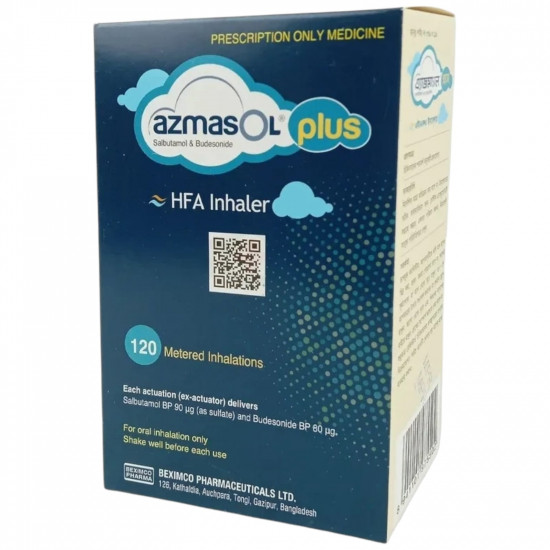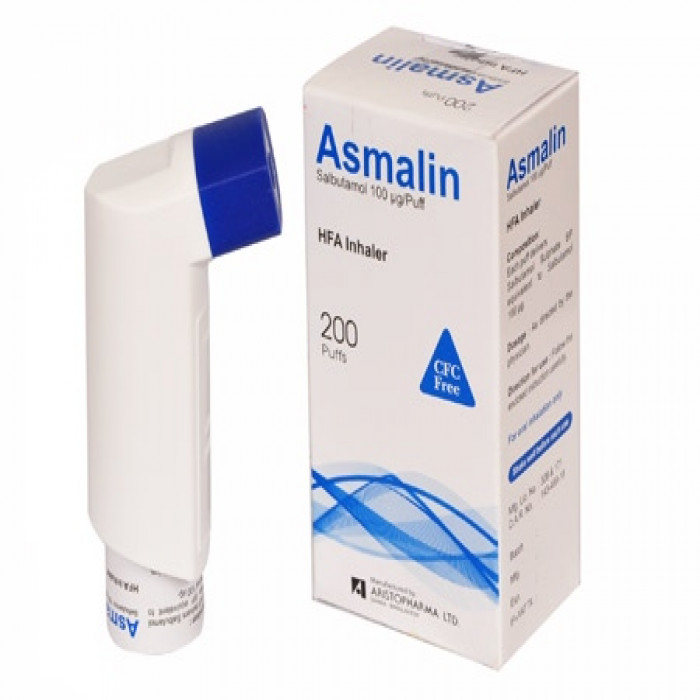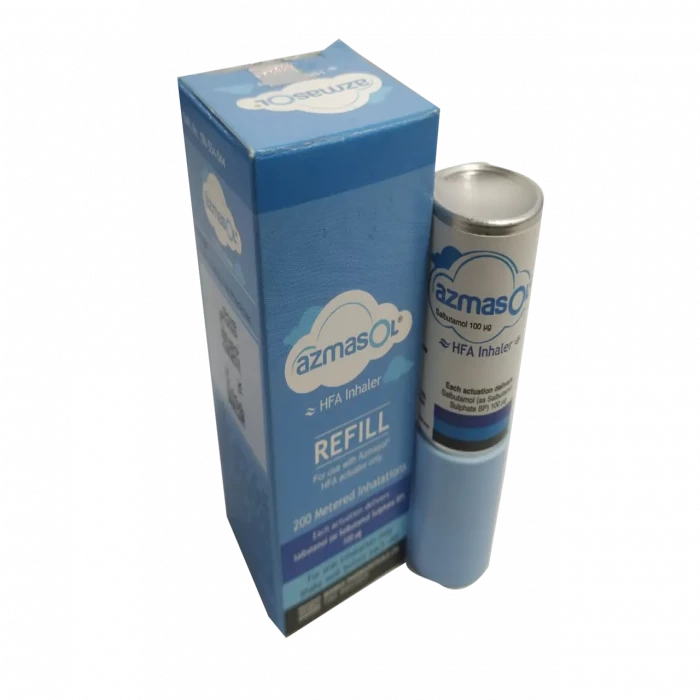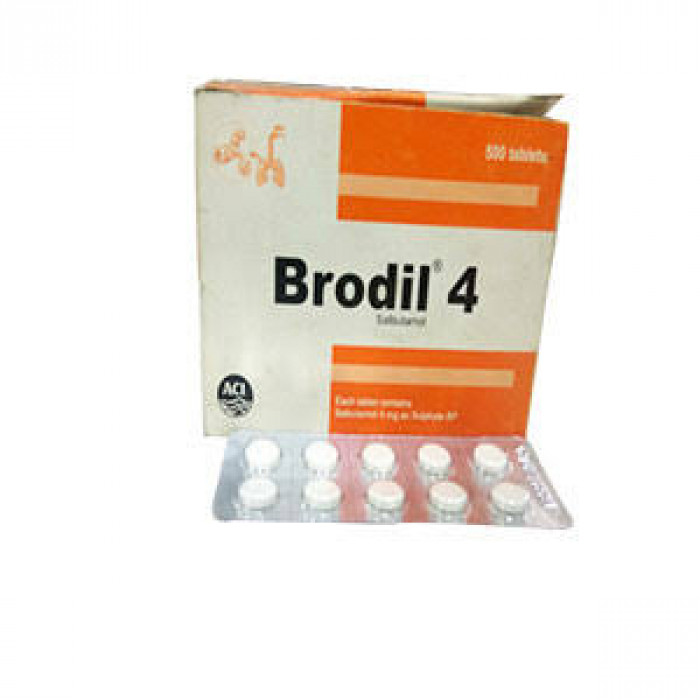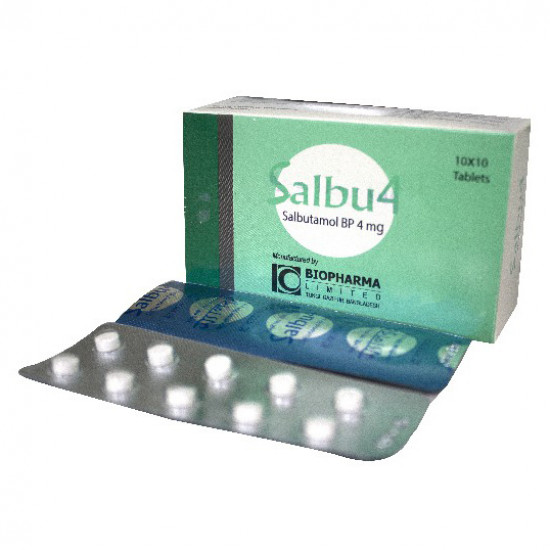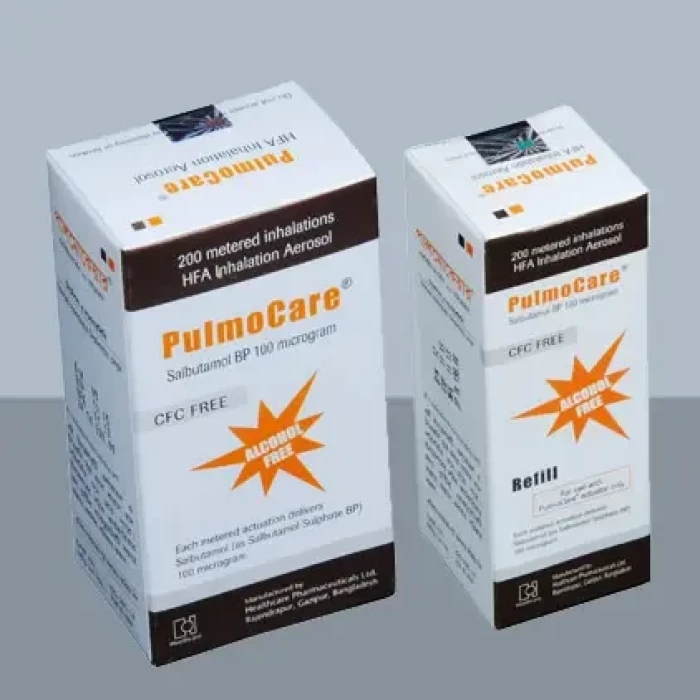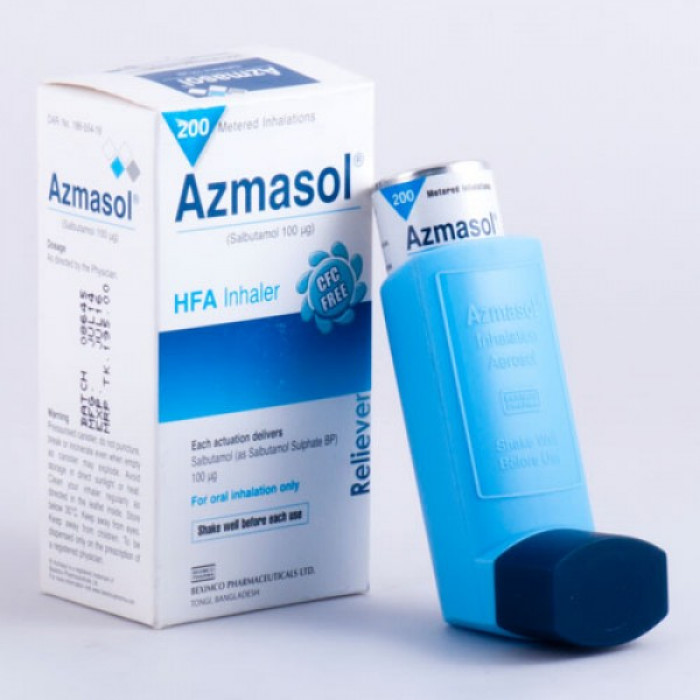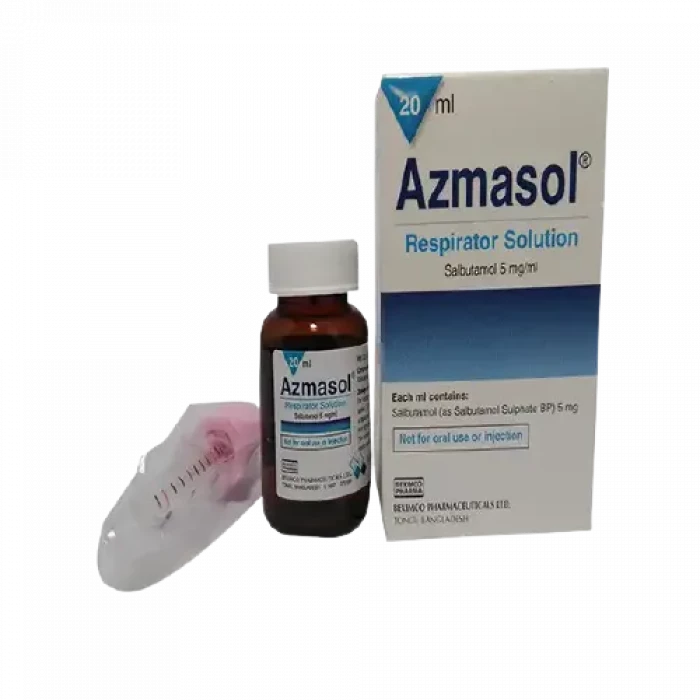
✔ 100% Authentic Product
👁️ Currently Viewing 2721
Azmasol Respirator Solution 20ml
Discount
Price: ৳ 113
MRP:
৳
120
6%
Off

100% Genuine Products, Guaranteed

Safe & Secure Payments, Always

Fast, Secure & Efficient Delivery

Proper Packaging
 Cash on Delivery - All over Bangladesh
Cash on Delivery - All over Bangladesh Regular Delivery - 12-24 Hours, Dhaka City* Charge Tk.39-59
Regular Delivery - 12-24 Hours, Dhaka City* Charge Tk.39-59 Regular Delivery - 24-48 Hours, Other Cities* Charge Tk.99-110
Regular Delivery - 24-48 Hours, Other Cities* Charge Tk.99-110
 ফ্রি ডেলিভারিঃ - ৯৯৯ টাকা+ অর্ডারে, ঢাকা
শহরে
ফ্রি ডেলিভারিঃ - ৯৯৯ টাকা+ অর্ডারে, ঢাকা
শহরে ফ্রি ডেলিভারিঃ - ২৯৯৯ টাকা+ অর্ডারে, ঢাকার
বাহিরে
ফ্রি ডেলিভারিঃ - ২৯৯৯ টাকা+ অর্ডারে, ঢাকার
বাহিরে
100% Genuine Products, Guaranteed
Safe & Secure Payments, Always
Fast, Secure & Efficient Delivery
Proper Packaging
 Cash on Delivery - All over Bangladesh
Cash on Delivery - All over Bangladesh Regular Delivery - 12-24 Hours, Dhaka City* Charge Tk.39-59
Regular Delivery - 12-24 Hours, Dhaka City* Charge Tk.39-59 Regular Delivery - 24-48 Hours, Other Cities* Charge Tk.99-110
Regular Delivery - 24-48 Hours, Other Cities* Charge Tk.99-110 ফ্রি ডেলিভারিঃ - ৯৯৯ টাকা+ অর্ডারে, ঢাকা
শহরে
ফ্রি ডেলিভারিঃ - ৯৯৯ টাকা+ অর্ডারে, ঢাকা
শহরে ফ্রি ডেলিভারিঃ - ২৯৯৯ টাকা+ অর্ডারে, ঢাকার
বাহিরে
ফ্রি ডেলিভারিঃ - ২৯৯৯ টাকা+ অর্ডারে, ঢাকার
বাহিরে
✅ Description:
Indications
Salbutamol Inhaler is indicated for the treatment of reversible airway obstruction brought on by bronchitis and emphysema as well as for the treatment of bronchospasm in bronchial asthma.
Exercise-Induced Bronchospasm: Salbutamol Inhaler can be used to treat acute dyspnea attacks and can also be used as a preventative measure before physical activity or to stop exercise-induced asthma.
Pharmacology
The 2-adrenoceptor is a selective agonist of salbutamol. It has therapeutic effects on the 1-adrenoceptors of cardiac muscle but little to no effect on the 2-adrenoceptors of bronchial smooth muscle. Salbutamol causes short-acting (4-6 hours) bronchodilation with a rapid onset in reversible airway obstruction (within 5 minutes). By acting as an anti-inflammatory on mast cells, it also prevents the release of bronchoconstrictor mediators like histamine, neutrophil chemotactic factor (NCF), and prostaglandin D2.
Dosage & Administration
Salbutamol tablet or syrup-
- Children:
- 2-6 years: 2.5 ml syrup, 3-4 times daily
- 6-12 years: 5 ml syrup, 3-4 times daily
Over 12 years: 5-10 ml syrup, 3-4 times daily (2-4 mg tablet, 3-4 times daily)
Adults: 2-4 mg tablet, 3-4 times daily. The maximum single dose is 8 mg tablet.
Salbutamol Respirator Solution: To be used with a suitable nebulizer device under the direction of a physician. The solution must not be injected or ingested.
Method-1 (Intermittent Administration):
- Adults (and the elderly): 0.5 ml-1.0 ml salbutamol up to four times a day. Up to 40mg per day can be given under strict medical direction in the hospital. 0.5-1 ml solution should be diluted to a final volume of 2-4 ml with sterile normal saline solution. It will take time about 10 minutes.
- Salbutamol respiratory solution may be used undiluted for intermittent administration. For this 2.0 ml of the solution is placed in the nebulizer and the patient is allowed to inhale until bronchodilation is achieved. This usually takes 3-5 minutes.
- Children under 12 years of age: 0.5 ml of the solution diluted to 2.0-4.0 ml with normal saline. Some children may however require higher doses of up to 1.0 ml of the solution. Intermittent treatment may be repeated four times a day.
Method-2 (Continuous administration): 1-2 ml solution is diluted to make up to 100 ml with normal saline solution. The diluted solution is administered by a suitable nebulizer device. When there is a risk of anoxia through hypoventilation, oxygen should be added to the inspired air.
Salbutamol nebulizer solution: To be used with a suitable nebulizer device under the direction of a physician. The solution must not be injected or ingested.
- Adults & Elderly: 2.5 mg to 5 mg Salbutamol up to 4 times a day. Up to 40 mg/day may be given under strict medical direction in the hospital.
- Children under 12 years: 2.5 mg up to 4 times a day. A higher dose of up to 5 mg four times a day may be used if required.
Salbutamol injection:
Adults:
- Salbutamol I.V. infusion solution is used to prepare a solution for continuous intravenous infusion. It should not be injected undiluted. A suitable solution for infusion may be prepared by diluting 5 mL of Salbutamol I.V. infusion solution (1000 mcg/mL) in 500 mL of a chosen i.v. the solution to provide a salbutamol concentration of 10 mcg/mL.
- The only recommended diluents are Sodium Chloride Injection, or Sodium Chloride and Dextrose Injection.
- Infusion rates providing 3 to 20 micrograms of salbutamol/minute (0.3 to 2ml/minute of the above infusion solution) are usually adequate. Infusion rates can be started at 5 mcg of salbutamol/min., and can be increased to 10 mcg/min., and 20 mcg/min. at 15 - 30 minute intervals, if necessary.
- As with all parenteral drug products, intravenous admixtures should be inspected visually for clarity, particulate matter, precipitate, discoloration, and leakage prior to administration.
- All unused admixtures of Salbutamol infusion solution with infusion fluids should be discarded 24 hours after preparation.
Children and Adolescents (<18 years of age): The dosage of Salbutamol infusion solution in the pediatric age group has not been established. At present, there are insufficient data to recommend a dosage regimen for children.
Salbutamol Inhalation Capsule:
- Adults: For the relief of bronchospasm and for managing intermittent episodes of asthma, one or two inhalation capsule may be administered as a single dose. The usual recommended dosage of Salbutamol inhalation capsule for inhalation for adults for maintenance or prophylactic therapy is the contents of one 200 microgram capsule every 4 to 6 hours using a device. In some patients, the contents of two 200 microgram capsules inhaled every 4 to 6 hours may be required. Large doses or more frequent administration is not recommended. The use of salbutamol powder for inhalation can be continued as medically indicated to control recurring/intermittent episodes of bronchospasm.
- Children: One Salbutamol inhalation capsule is the recommended dose for relief of acute bronchospasm in the maintenance of episodic asthma or before exercise of children 4 years of age and older. One inhalation should be administered three or four times a day for routine maintenance or prophylactic therapy. This dosage may be increased to the inhalation of two inhalation capsules, if necessary. The bronchodilator effect of each administration of inhaled Salbutamol inhalation capsule lasts for at least four hours. Such patients should be warned not to increase the dose of inhalers but should seek medical advice immediately.
Excercise-induced Asthma:
- Adults: 400 micrograms
- Child: 200 micrograms, 15-30 minutes prior to any physical exertion
Interaction
Salbutamol and non-selective beta-blocking drugs such as propranolol should generally not be prescribed together. Potentially serious hypokalaemia may result from β2-agonist therapy. Particular caution is advised in acute severe asthma as this effect may be potentiated by concomitant treatment with xanthine derivatives, steroids, diuretics, and hypoxia. It is recommended that serum potassium levels are monitored in such situations.
Contraindications
Salbutamol inhaler is contraindicated in patients with a history of hypersensitivity to salbutamol or any other components of Salbutamol inhaler.
Side Effects
Salbutamol is easily tolerated by most people. During inhalation, just a few adverse effects have been recorded. Tremors, anxiety, muscle cramps, headache, palpitation, a compensatory slight rise in heart rate, cardiac arrhythmias (including atrial fibrillation, supraventricular tachycardia, and extrasystoles), and tachycardia are all possible symptoms. Salbutamol inhalation can cause mouth and throat discomfort.
Pregnancy & Lactation
Pregnancy Classification C. In pregnant women, there are no sufficient and well-controlled studies using salbutamol inhalers or salbutamol sulfate. During pregnancy, this inhaler should only be used if the possible benefit outweighs the potential risk to the fetus. The components of the Salbutamol inhaler are not known to be excreted in human milk. When administering this inhaler to a nursing mother, exercise caution.
Precautions & Warnings
- The inhalers are known as "reliever" inhalers because they quickly alleviate breathing issues.
- When administering the medication and loading the dose, the inhaler must always be kept upright.
- After inhaling, if you taste a faintly sweet powder, you have taken the prescribed dose and the active ingredient has reached your lungs.
- Once you've used the inhaler, always replace the cap.
- In order to prevent any fungal infections in your mouth and throat, gargle with warm water after each inhalation.
- Among the side effects is possible to dry mouth. Regular mouthwash, good oral hygiene, more water consumption, and sugarless candy may be beneficial.
- If you require Azmasol HFA more than three times per week, it may indicate that your breathing issue is not under good control. Consult your physician about it.
- If you experience chest pain, a headache, or a racing heartbeat, let your doctor know right away.
Storage Conditions
Protect from light and moisture by storing in a cool, dry place below 30°C. Keep out of children's reach.
⚠️Disclaimer:
At ePharma, we’re committed to providing accurate and accessible health information. However, all content is intended for informational purposes only and should not replace medical advice from a qualified physician. Please consult your healthcare provider for personalized guidance. We aim to support, not substitute, the doctor-patient relationship.




